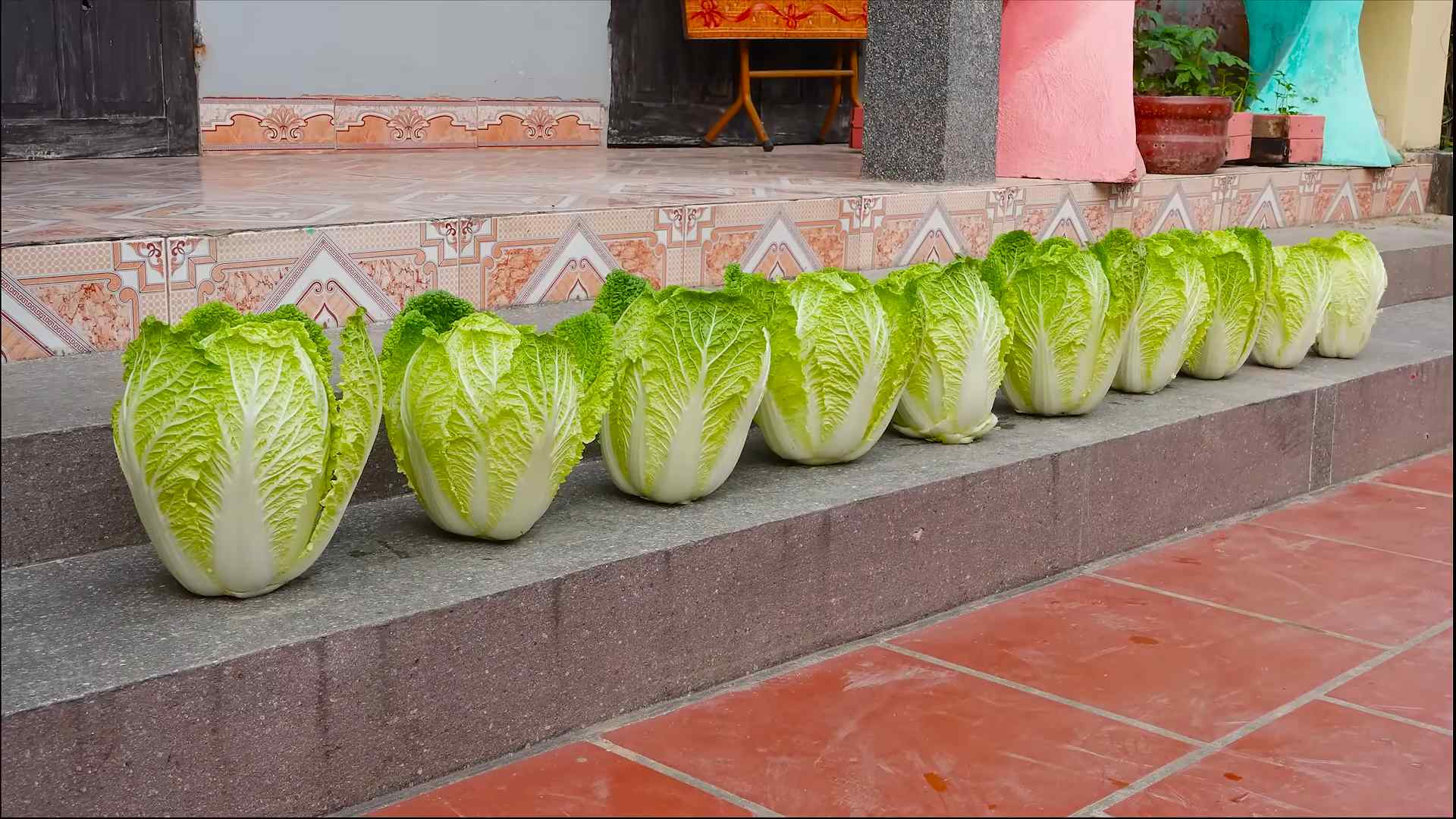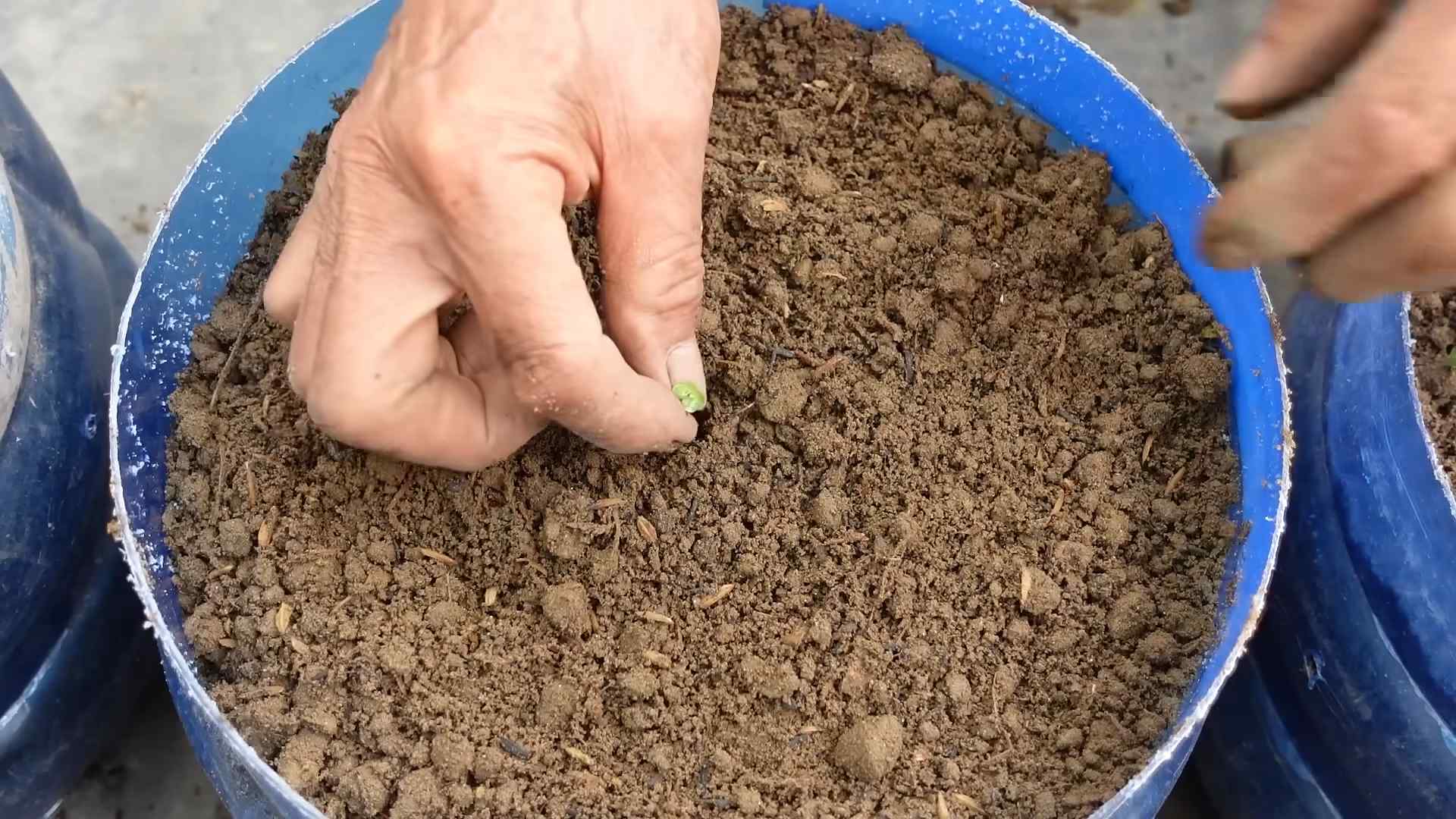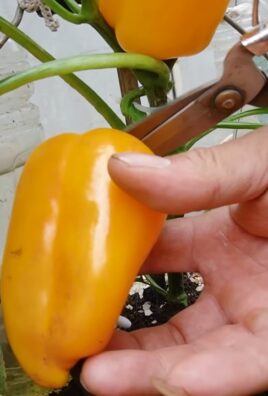Growing Napa Cabbage at Home can seem daunting, but trust me, it’s more achievable than you think! Have you ever dreamt of strolling into your backyard and harvesting fresh, crisp Napa cabbage for a delicious stir-fry or a vibrant kimchi batch? Well, dream no more! This DIY guide is your passport to homegrown goodness, packed with simple tricks and hacks to make your Napa cabbage cultivation a resounding success.
Napa cabbage, also known as Chinese cabbage, boasts a rich history, deeply rooted in Asian culinary traditions. For centuries, it has been a staple ingredient, prized for its delicate flavor and versatility. Beyond its culinary appeal, growing your own Napa cabbage offers a unique connection to this heritage.
Why should you embark on this DIY adventure? In today’s world, knowing where your food comes from is more important than ever. Growing Napa Cabbage at Home allows you to control the quality of your produce, ensuring it’s free from harmful pesticides and packed with nutrients. Plus, there’s nothing quite like the satisfaction of nurturing a plant from seed to harvest. This guide will provide you with the knowledge and confidence to cultivate thriving Napa cabbage right in your own backyard, regardless of your gardening experience. Let’s get started!

Growing Napa Cabbage at Home: A Beginner’s Guide
Alright, cabbage lovers! So you want to grow your own Napa cabbage? Fantastic choice! It’s surprisingly easy, and nothing beats the taste of fresh, homegrown veggies. I’m going to walk you through everything you need to know, from seed to harvest. Let’s get started!
Choosing the Right Variety and Starting Seeds
First things first, let’s talk about choosing the right variety. Napa cabbage comes in a few different types, and some are better suited for certain climates than others.
* Consider your climate: If you live in a warmer area, look for heat-tolerant varieties like ‘Blues’ or ‘Optiko’. If you have shorter summers, opt for faster-maturing varieties like ‘Minuet’.
* Think about size: Napa cabbage can range in size from small, compact heads to larger, more sprawling ones. Choose a size that suits your needs and garden space.
* Read reviews: Check online reviews or ask your local nursery for recommendations on varieties that perform well in your area.
Now, let’s get those seeds started! You can either direct sow them in your garden, or start them indoors for a head start. I prefer starting them indoors, especially if you have a shorter growing season.
* Starting indoors (recommended):
* When to start: About 4-6 weeks before the last expected frost.
* What you’ll need: Seed starting trays or small pots, seed starting mix, a spray bottle, and a grow light (optional, but highly recommended).
* How to do it:
1. Fill your seed starting trays or pots with seed starting mix.
2. Moisten the mix with a spray bottle. You want it damp, but not soggy.
3. Sow 2-3 seeds per cell or pot, about ¼ inch deep.
4. Gently cover the seeds with more seed starting mix.
5. Water again with the spray bottle.
6. Place the trays or pots in a warm location (around 70-75°F).
7. If you’re using a grow light, position it a few inches above the trays.
8. Keep the soil consistently moist, but not waterlogged.
9. Once the seedlings emerge (usually within 5-7 days), thin them to one seedling per cell or pot. Choose the strongest, healthiest-looking seedling.
10. Harden off the seedlings before transplanting them outdoors. This means gradually exposing them to outdoor conditions over a period of 7-10 days. Start by placing them outside for an hour or two each day, and gradually increase the amount of time they spend outdoors.
* Direct sowing (if your climate allows):
* When to sow: 2-3 weeks before the last expected frost, or in late summer for a fall harvest.
* What you’ll need: Well-drained soil, a garden rake, and a watering can.
* How to do it:
1. Prepare your garden bed by loosening the soil and removing any weeds or rocks.
2. Sow the seeds about ½ inch deep and 1-2 inches apart in rows.
3. Gently cover the seeds with soil.
4. Water thoroughly.
5. Thin the seedlings to 12-18 inches apart once they have a few true leaves.
Preparing the Garden Bed
Napa cabbage needs a sunny spot with well-drained soil. It also prefers slightly acidic soil with a pH of 6.0 to 6.5.
* Sunlight: Choose a location that gets at least 6 hours of sunlight per day.
* Soil: Amend your soil with compost or other organic matter to improve drainage and fertility. If your soil is heavy clay, consider adding sand or perlite to improve drainage.
* pH: Test your soil pH using a soil testing kit. If your soil is too alkaline, you can lower the pH by adding sulfur or peat moss.
* Fertilizer: Napa cabbage is a heavy feeder, so it’s important to fertilize regularly. Before planting, incorporate a balanced fertilizer into the soil, following the package instructions. I like to use a slow-release organic fertilizer.
Transplanting Seedlings
Once your seedlings have developed a few true leaves and have been hardened off, it’s time to transplant them into the garden.
1. Choose a cloudy day: Transplanting on a cloudy day will help prevent the seedlings from getting stressed by the sun.
2. Dig holes: Dig holes that are slightly larger than the root balls of the seedlings. Space the holes 12-18 inches apart.
3. Gently remove the seedlings: Carefully remove the seedlings from their trays or pots, being careful not to damage the roots.
4. Place the seedlings in the holes: Place the seedlings in the holes, making sure the top of the root ball is level with the soil surface.
5. Fill in the holes: Fill in the holes with soil and gently firm the soil around the seedlings.
6. Water thoroughly: Water the seedlings thoroughly after transplanting.
7. Mulch: Apply a layer of mulch around the seedlings to help retain moisture, suppress weeds, and regulate soil temperature. I like to use straw or shredded leaves.
Caring for Your Napa Cabbage
Now that your Napa cabbage is in the ground, it’s time to give it some TLC.
* Watering: Napa cabbage needs consistent moisture, especially during hot, dry weather. Water deeply whenever the top inch of soil feels dry. Aim for about 1-1.5 inches of water per week.
* Fertilizing: Fertilize your Napa cabbage every 2-3 weeks with a balanced fertilizer. You can also side-dress with compost or aged manure.
* Weeding: Keep the garden bed free of weeds, as weeds can compete with the cabbage for nutrients and water.
* Pest control: Napa cabbage is susceptible to a few common pests, including cabbage worms, aphids, and flea beetles.
* Cabbage worms: These are green caterpillars that feed on the leaves of the cabbage. You can control them by handpicking them off the plants, or by using a biological insecticide like Bacillus thuringiensis (Bt).
* Aphids: These are small, sap-sucking insects that can weaken the plants. You can control them by spraying them with a strong stream of water, or by using insecticidal soap.
* Flea beetles: These are small, jumping beetles that chew small holes in the leaves. You can control them by covering the plants with row covers, or by using an insecticide.
* Disease control: Napa cabbage can also be susceptible to a few common diseases, including clubroot and black rot.
* Clubroot: This is a soilborne disease that causes the roots to swell and become distorted. You can prevent clubroot by planting resistant varieties, and by rotating your crops.
* Black rot: This is a bacterial disease that causes dark lesions on the leaves. You can prevent black rot by planting disease-free seeds, and by avoiding overhead watering.
Harvesting Your Napa Cabbage
The moment you’ve been waiting for! Napa cabbage is typically ready to harvest in 70-80 days from seed, or 50-60 days from transplant.
1. Check for firmness: The head should feel firm and compact when you squeeze it gently.
2. Check the size: The head should be the size you expect for the variety you planted.
3. Cut the head: Use a sharp knife to cut the head from the plant at the base.
4. Remove outer leaves: Remove any damaged or discolored outer leaves.
5. Store properly: Store your Napa cabbage in the refrigerator for up to 2 weeks. Wrap it loosely in plastic wrap or place it in a plastic bag.
Troubleshooting
Even with the best care, you might encounter some problems along the way. Here are a few common issues and how to address them:
* Heads not forming: This could be due to a lack of sunlight, poor soil fertility, or inconsistent watering. Make sure your plants are getting enough sunlight, fertilize regularly, and water deeply whenever the top inch of soil feels dry.
* Bolting (going to seed): This can happen if the plants are stressed by heat or drought. Choose heat-tolerant varieties, provide consistent watering, and mulch around the plants to help regulate soil temperature.
* Pest infestations: Regularly inspect your plants for pests and take action as soon as you notice any problems.
Enjoying Your Harvest
Now that you’ve harvested your Napa cabbage, it’s time to enjoy it! Napa cabbage is incredibly versatile and can be

Conclusion
Growing your own Napa cabbage at home is more than just a gardening project; it’s an investment in fresh, flavorful, and healthy eating. This DIY approach allows you to bypass the often-inflated prices and sometimes questionable quality of store-bought produce, putting you in complete control of what ends up on your plate. From seed to harvest, you’ll witness the incredible transformation of a tiny seed into a crisp, vibrant head of Napa cabbage, a truly rewarding experience for any gardener, novice or seasoned.
But the benefits extend far beyond mere cost savings. When you cultivate your own Napa cabbage, you have the power to choose organic and sustainable practices, ensuring that your vegetables are free from harmful pesticides and herbicides. You can tailor the growing conditions to maximize flavor and nutritional content, resulting in a Napa cabbage that surpasses anything you can find in a supermarket. Imagine the satisfaction of serving a salad made with cabbage you nurtured from the very beginning, knowing that it’s packed with vitamins, minerals, and the pure goodness of nature.
This guide has provided you with the essential knowledge to successfully grow Napa cabbage at home, from selecting the right seeds and preparing the soil to managing pests and diseases. Remember to pay close attention to watering, fertilization, and sunlight requirements to ensure optimal growth. Don’t be afraid to experiment with different varieties of Napa cabbage to discover your personal favorite. Consider trying ‘Blues,’ known for its disease resistance, or ‘Optiko,’ a compact variety perfect for smaller gardens.
Variations and Creative Uses: Once you’ve harvested your bounty, the culinary possibilities are endless. Napa cabbage is incredibly versatile and can be used in a wide range of dishes. Of course, there’s the classic kimchi, a staple of Korean cuisine, but don’t stop there. Try adding shredded Napa cabbage to stir-fries for a delightful crunch, or use it as a base for refreshing salads with a light vinaigrette. You can also incorporate it into soups, stews, and even spring rolls for added texture and flavor. For a unique twist, try grilling wedges of Napa cabbage with a drizzle of olive oil and a sprinkle of sea salt.
A Must-Try DIY Project: Growing Napa cabbage at home is a must-try DIY project for anyone who appreciates fresh, healthy food and the satisfaction of nurturing something from seed to table. It’s a relatively easy and rewarding endeavor that can transform your garden and your diet.
We encourage you to embrace this gardening adventure and experience the joy of growing your own Napa cabbage. Don’t hesitate to share your experiences, tips, and photos with us and the wider gardening community. Let’s inspire each other to cultivate a more sustainable and flavorful future, one Napa cabbage at a time! Share your successes (and even your challenges!) in the comments below. We’re eager to learn from your experiences and help you troubleshoot any issues you may encounter. Happy gardening!
Frequently Asked Questions (FAQ)
What is the best time of year to plant Napa cabbage?
The best time to plant Napa cabbage depends on your climate. Napa cabbage is a cool-season crop, meaning it thrives in temperatures between 60°F and 70°F (15°C and 21°C). In most regions, this means planting in early spring or late summer for a fall harvest. For spring planting, start seeds indoors 4-6 weeks before the last expected frost. For fall planting, sow seeds directly into the garden in late summer, about 6-8 weeks before the first expected frost. Consider your local climate and frost dates to determine the optimal planting time for your area. If you live in a region with mild winters, you may even be able to grow Napa cabbage throughout the winter months.
How much sunlight does Napa cabbage need?
Napa cabbage requires at least 6 hours of direct sunlight per day to thrive. Choose a planting location that receives ample sunlight throughout the day. If you live in a particularly hot climate, some afternoon shade may be beneficial to prevent the leaves from scorching. Insufficient sunlight can result in stunted growth and smaller heads of cabbage.
What kind of soil is best for growing Napa cabbage?
Napa cabbage prefers well-drained, fertile soil that is rich in organic matter. The ideal soil pH is between 6.0 and 7.5. Before planting, amend the soil with compost, well-rotted manure, or other organic matter to improve drainage, fertility, and water retention. Avoid planting in heavy clay soil, as this can lead to root rot. If you have clay soil, amend it with plenty of organic matter and consider planting in raised beds to improve drainage.
How often should I water my Napa cabbage plants?
Napa cabbage needs consistent moisture to grow properly. Water deeply and regularly, especially during dry periods. Aim to keep the soil consistently moist but not waterlogged. A good rule of thumb is to water when the top inch of soil feels dry to the touch. Mulching around the plants can help retain moisture and suppress weeds. Avoid overhead watering, as this can increase the risk of fungal diseases. Instead, water at the base of the plants.
What are some common pests and diseases that affect Napa cabbage?
Napa cabbage is susceptible to several pests and diseases, including cabbage worms, aphids, flea beetles, clubroot, and black rot. Regularly inspect your plants for signs of pests or diseases. Cabbage worms can be controlled with Bacillus thuringiensis (Bt), a biological insecticide. Aphids can be washed off with a strong stream of water or treated with insecticidal soap. Flea beetles can be deterred with row covers. Clubroot is a soilborne disease that can be prevented by practicing crop rotation and maintaining a soil pH above 7.0. Black rot is a bacterial disease that can be prevented by using disease-free seeds and avoiding overhead watering.
How do I harvest Napa cabbage?
Napa cabbage is typically ready to harvest 70-80 days after planting. The head should be firm and compact. To harvest, use a sharp knife to cut the head at the base of the plant. Remove any yellowing or damaged outer leaves. Napa cabbage can be stored in the refrigerator for several weeks.
Can I grow Napa cabbage in containers?
Yes, Napa cabbage can be grown in containers, but you’ll need to choose a large container that is at least 12 inches in diameter and 12 inches deep. Use a well-draining potting mix and provide adequate sunlight and water. Container-grown Napa cabbage may require more frequent fertilization than plants grown in the ground.
How can I prevent my Napa cabbage from bolting (going to seed)?
Bolting is when a plant prematurely flowers and goes to seed, often due to stress from heat or lack of water. To prevent bolting, choose bolt-resistant varieties of Napa cabbage, plant at the appropriate time of year, and provide consistent moisture. Mulching can also help keep the soil cool and prevent bolting. If you notice your Napa cabbage starting to bolt, harvest it immediately, as the leaves will become bitter.
Is Napa cabbage nutritious?
Yes, Napa cabbage is a highly nutritious vegetable. It is a good source of vitamins A, C, and K, as well as folate, calcium, and potassium. It is also low in calories and high in fiber. Incorporating Napa cabbage into your diet can contribute to overall health and well-being.
What are some creative ways to use Napa cabbage in cooking?
Beyond kimchi and salads, Napa cabbage can be used in a variety of dishes. Try adding it to stir-fries, soups, stews, and spring rolls. You can also grill or roast it for a unique and flavorful side dish. Napa cabbage can also be fermented to make sauerkraut or other fermented vegetables. Its mild flavor and crisp texture make it a versatile ingredient in many cuisines.





Leave a Comment